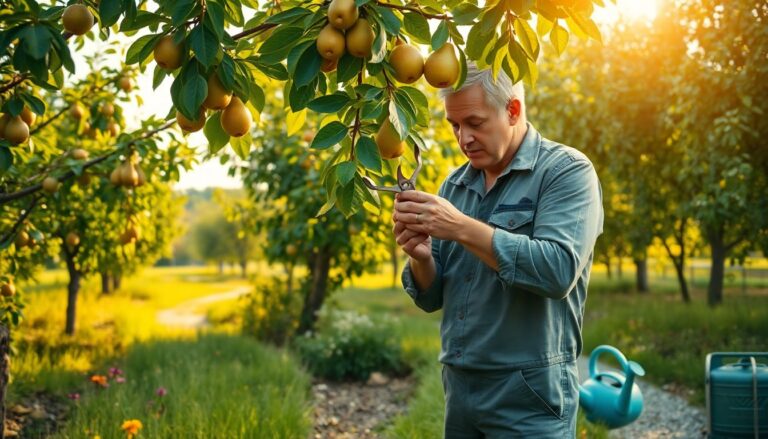Argomenti trattati
If you have planted fruit trees in your garden, you understand the satisfaction of seeing them thrive and produce fresh fruits. However, maximizing your trees’ harvest requires both skill and knowledge. By employing a few strategic approaches, you can enhance productivity and look forward to a rewarding season.
Understanding tree health
A strong foundation for increased fruit production lies in the overall health of your trees. Healthy trees are more resilient against pests and diseases, which can impede fruit development. To promote robust growth, consider the following:
Regular inspections
It is vital to inspect your trees regularly for signs of distress or infection. Look for unusual discoloration on leaves, premature fruit drop, or any signs of pests. Early detection allows for timely intervention, preventing larger issues from developing.
Proper pruning techniques
Pruning is essential for maintaining tree health. By removing dead or overcrowded branches, you improve air circulation and light penetration, both crucial for fruit development. Aim to prune during the dormant season, as this minimizes stress and encourages new growth when spring arrives.
Soil and nutrition management
The quality of the soil directly affects nutrient availability for your trees. Ensure that your soil is rich in essential nutrients by conducting a soil test. This analysis will provide insights into the pH level and nutrient content, allowing you to amend the soil as needed.
Fertilization methods
Applying the right type of fertilizer at appropriate times can significantly boost your trees’ fruit yield. Organic fertilizers, such as compost or well-rotted manure, enhance soil structure and promote healthy root development. Alternatively, slow-release fertilizers can deliver nutrients over time, ensuring consistent support for your trees.
Watering practices
Consistent and adequate watering is fundamental, especially during dry periods. Trees require a steady supply of moisture to sustain growth and fruiting. Establish a watering schedule that ensures deep, thorough watering at least once a week, adjusting for rainfall as necessary. Consider using mulch to retain soil moisture and regulate temperature.
Pest and disease management
Protecting your fruit trees from pests and diseases is essential for maximizing yield. Implement an integrated pest management plan that combines various strategies to safeguard your trees.
Natural deterrents
Utilize natural pest deterrents to minimize chemical exposure. For example, introducing beneficial insects like ladybugs can help control aphid populations. Additionally, planting companion plants can repel harmful insects while attracting pollinators.
Monitoring for diseases
Stay vigilant against common fruit tree diseases, such as powdery mildew or blight. Regularly inspect the foliage and fruit for signs of disease, and take action immediately, whether by removing affected parts or applying organic treatments.
A strong foundation for increased fruit production lies in the overall health of your trees. Healthy trees are more resilient against pests and diseases, which can impede fruit development. To promote robust growth, consider the following:0
A strong foundation for increased fruit production lies in the overall health of your trees. Healthy trees are more resilient against pests and diseases, which can impede fruit development. To promote robust growth, consider the following:1

